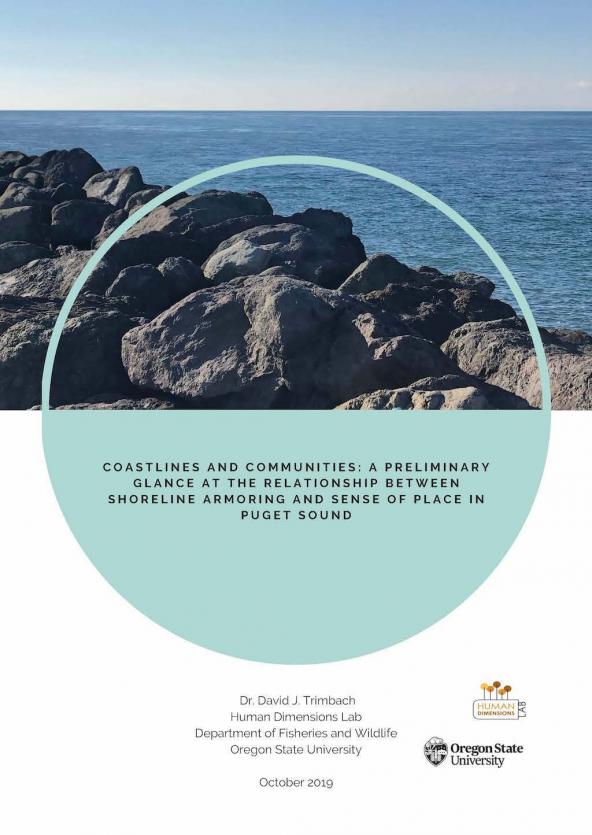By Jeff Rice, Puget Sound Institute
Shoreline armoring not only damages the ecosystem, it may also impact our ‘sense of place’ and enjoyment of the environment, according to a 2019 report from Oregon State University. The report is based on surveys of both property owners and non-property owners in Puget Sound.
More than 66% of survey respondents indicated that natural attributes were a strong part of their connection to Puget Sound’s shorelines. The report’s author, Dr. David Trimbach of Oregon State University’s Human Dimensions Lab, argues that environmentally damaging shoreline development such as seawalls and bulkheads could diminish that connection.
“When survey respondents were asked to select their ‘ideal’ and ‘least ideal’ shorelines, they selected hard shorelines as their least ideal… and natural or soft shorelines as their ideal,” Trimbach writes. About 67% of respondents preferred natural shorelines.
Scientific studies have shown that shoreline armoring along Puget Sound’s beaches destroys habitat for salmon and forage fish, leads to beach erosion and lowers overall biodiversity. Approximately 30% of Puget Sound’s shorelines are considered to be armored.
According to Trimbach, understanding Puget Sound residents’ preference for more natural shorelines will have implications for shoreline management and policy. “Recognizing that shorelines are a shared natural resource with ecosystem services or benefits should be considered when making key shoreline decisions, including coastal development and armoring decisions,” he writes in the report.
The survey included 413 adult residents of Puget Sound’s 12 counties. 51.6% of the respondents were female and 47.9% were male. Respondents ranged from ages 18 to 85 or older. Questions focused on regional ’sense of place’ — a state-designated Vital Sign of Puget Sound health related to “place attachment, place identity, place meaning, and place dependence.”
Additional findings include (as quoted from the report):
- “66.3% of respondents considered wildlife-natural areas as a high priority for shoreline use.”
- “62.2% of respondents agreed that they felt an attachment to the region’s shorelines.”
- “Respondents prioritized shoreline activities associated with maintaining habitat for fish and wildlife (70% high) and protecting wetlands for public benefits (51.6% high).”
- “Respondents preferred shorelines being used for wildlife-natural areas (66.3% high priority) and public parks and facilities (53% high priority).”
- “When asked to identify the item that most bothers them, survey participants responded that litter (43%), crowds (19%), and (general) site abuse (16%) were the most bothersome shoreline issues.”
You can view the full report on the Encyclopedia of Puget Sound.
